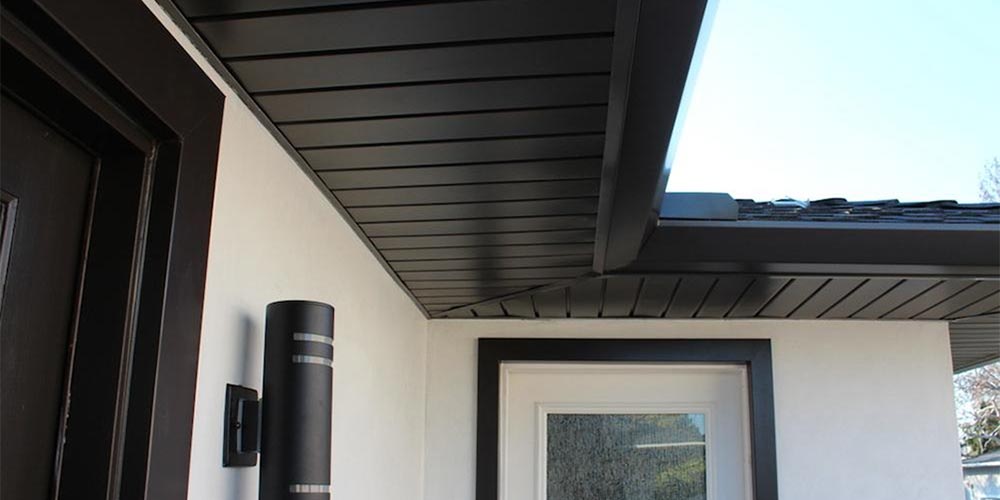
Vinyl soffits and fascia are popular choices for homeowners seeking durable and low-maintenance solutions for their roofline. Soffits and fascia play a crucial role in protecting the roof structure, enhancing aesthetics, and providing ventilation. In this article, we will delve into the pros and cons of vinyl soffits and fascia, as well as the costs associated with replacing these components. We will explore the benefits of vinyl materials, discuss the potential drawbacks, and provide insights into the cost considerations of replacing soffit and fascia boards.
Pros of Vinyl Soffits and Fascia
- Durability: Vinyl is a highly durable material that is resistant to rot, warping, and insect damage. It withstands the effects of weather elements, such as rain, snow, and UV rays, making it a long-lasting choice for soffits and fascia.
- Low Maintenance: Vinyl soffits and fascia require minimal maintenance. They are easy to clean and do not require regular painting or staining. Occasional washing with a mild detergent and water is usually sufficient to keep them looking fresh and new.
- Moisture Resistance: Vinyl is inherently moisture-resistant, making it an ideal choice for areas prone to high humidity or frequent rainfall. It does not absorb water, helping to prevent water damage, mold growth, and rot.
- Aesthetics: Vinyl soffits and fascia are available in various colors and styles, allowing homeowners to achieve the desired aesthetic appearance for their home. They can be coordinated with the existing exterior design or used to create a contrast that enhances the curb appeal.
Cons of Vinyl Soffits and Fascia
- Limited Heat Resistance: Vinyl may have limitations in high-temperature environments. Excessive heat exposure can cause the material to warp or fade over time. Proper ventilation and insulation can help mitigate potential heat-related issues.
- Potential for Expansion and Contraction: Vinyl can expand and contract with fluctuations in temperature. It is important to choose high-quality vinyl products that are designed to withstand these changes without compromising their structural integrity.
- Environmental Impact: Vinyl is a synthetic material derived from non-renewable resources. Although efforts have been made to improve its sustainability, some environmental concerns remain. Homeowners seeking more eco-friendly options may explore alternative materials.
Replacement Costs for Soffit and Fascia Boards
When considering the replacement of soffit and fascia boards, costs can vary depending on factors such as the size of the project, location, material quality, and labor expenses. It is recommended to obtain multiple quotes from reputable contractors to compare prices and ensure a fair cost estimate.
The cost of replacing soffit boards primarily depends on the linear footage required. On average, homeowners can expect to spend around $8 to $20 per linear foot for vinyl soffit board replacement, including labor and material costs.
For fascia board replacement, costs can range between $6 to $20 per linear foot, depending on factors such as the complexity of the installation, material quality, and any additional services required.
It is important to note that these cost estimates are approximate and may vary based on specific project requirements and regional factors. Consulting with local contractors can provide more accurate pricing information tailored to individual needs.
What are the environmental considerations of using vinyl?
When considering the environmental impact of using vinyl, it is essential to examine various aspects throughout the lifecycle of the material. Here are some key environmental considerations associated with using vinyl:
- Raw Material Extraction: Vinyl is derived from non-renewable resources, primarily petroleum and chlorine. The extraction and processing of these raw materials have environmental implications, including energy consumption, greenhouse gas emissions, and potential habitat disruption. The finite nature of these resources raises concerns about their long-term sustainability.
- Manufacturing Processes: The production of vinyl involves energy-intensive processes, which contribute to carbon emissions and air pollution. Additionally, certain manufacturing techniques may release toxic chemicals or byproducts, potentially impacting air and water quality. Efforts have been made to improve manufacturing practices and reduce environmental impacts, but these considerations remain significant.
- Longevity and Disposal: Vinyl is known for its durability, which can contribute to its longevity. However, when it comes to disposal, vinyl poses challenges. While it is technically recyclable, the infrastructure and accessibility for vinyl recycling may vary by region. Improper disposal of vinyl products can result in landfill accumulation or incineration, potentially releasing harmful pollutants into the environment.
- Potential Health Concerns: Some studies have raised concerns about potential health effects associated with certain additives used in vinyl production. These additives, such as phthalates and heavy metals, have been linked to health issues and environmental contamination. Regulations and advancements in vinyl manufacturing aim to reduce or eliminate these additives, but ongoing monitoring and research are necessary.
Sustainability and Alternatives: Given the environmental considerations surrounding vinyl, many homeowners and builders are exploring alternative materials with reduced environmental impacts. Wood, fiber cement, recycled plastic alternatives, or other sustainable materials may offer more eco-friendly options for soffits and fascia.
Conclusion
Vinyl soffits and fascia offer numerous advantages, including durability, low maintenance, moisture resistance, and aesthetic versatility. While they may have limitations such as heat resistance and potential expansion, these drawbacks can be effectively managed with proper installation and maintenance practices.
When considering the replacement of soffit and fascia boards, it is essential to factor in costs associated with materials, labor, and any additional services required.
